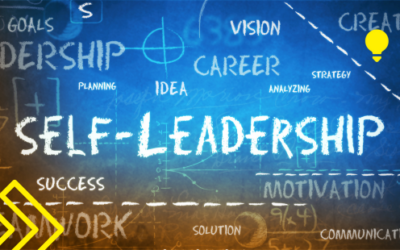15 January 2024

The Overwhelmed and Distracted Mind
In the digital age, many of us feel overwhelmed by the constant influx of information and distracted by the devices we use to consume it. With smartphones, social media, and an endless stream of emails and notifications, our attention is constantly being pulled in different directions. Many people struggle to focus for extended periods of time without feeling antsy or anxious. Studies show the average person’s attention span has dropped significantly in recent years, making deep focused thinking feel difficult.
This overwhelmed and easily distracted mind can make us feel scattered, unproductive, and unable to retain or make sense of information. With so many stimuli competing for our attention, it’s easy to get lost in rabbit holes of social media or random googling. Important tasks and priorities can fall through the cracks. We lose touch with the present moment and ability to think deeply.
Many futurists argue that the digital age is rewiring our brains and making us more impatient, impulsive, and dependent on short bursts of stimulation. We skim and scan rather than absorb. Our working memory becomes overloaded. Without proactive strategies to manage this firehose of information, we can become mentally fatigued and struggle to direct our focus.
Introducing the Second Brain Method
The “second brain” is a metaphor for using a system outside of your own biological brain to store, manage, and retrieve knowledge. Just as your first brain handles cognitive functions, your second brain augments your biological memory and thinking capacity.
The concept was popularized by the author Tiago Forte, who describes building a personal knowledge management (PKM) system to enhance productivity and creativity. The knowledge repository serves as an external brain to hold ideas, reference materials, notes and more. By capturing this information in a trusted system, you free up mental resources and avoid constantly juggling thoughts in your head.
A second brain provides numerous benefits:
- Offloads information from biological memory to reduce cognitive strain
- Allows for making connections between concepts stored over time
- Enables quick search and retrieval of relevant knowledge
- Facilitates processing ideas more deeply through writing
- Integrates and links materials from diverse sources
- Improves access to reference materials when needed
- Supports revisiting old ideas and gaining new insights
- Aids collaboration by sharing elements of your PKM system
By developing a trusted external brain, you can master your own mind. The second brain liberates your natural creativity and cognitive abilities by eliminating the clutter of disorganized thoughts. It enables knowledge work at a higher level.
Getting Things Off Your Mind and Into Your System
Capture everything instead of trying to remember. Don’t waste precious mental resources trying to hold thoughts and ideas in your mind. Get them out of your head and into a trusted system to free up that mental RAM.
The human brain is not designed to remember everything. Our working memory and cognitive resources are limited. When your mind is cluttered with open loops, unfinished tasks, and a barrage of inputs, it negatively impacts your ability to focus, think creatively, and make clear decisions.
By capturing all your fleeting thoughts, reference materials, project steps, meeting notes, and more into your second brain, you clear the clutter so your mind can focus on higher-level thinking and insight. Think of your second brain as extending your natural capabilities. It augments your biological memory and intellect.
The best part is that everything you capture into your system remains findable later when you need it. You develop a reliable and easily searchable exobrain. No more forgetting important ideas, losing key information, or wasting mental effort trying to hold too much in your mind at once. Your second brain seamlessly retains it all.
This process of getting things out of your head brings immense relief. You gain confidence knowing your thoughts are safely stored rather than fleeting. Your mind feels clearer and lighter, ready to tackle challenges with creativity and purpose. By mastering the habit of capture, your second brain unleashes greater productivity, insight, and peace of mind.
Organizing Your Second Brain
With a growing collection of notes, materials, and ideas in your second brain, it’s crucial to develop an organization system to easily retrieve what you need. This requires structuring your knowledge base for rapid recall. How you organize depends on your personal thinking style and needs. Here are effective methods to consider:
- Linking your notes: Use backlinks, wikilinks, tags, or highlights to connect related notes across your second brain. This builds an associative web for pulling information together.
- Developing a taxonomy: Create a hierarchical structure of folders, tags, or categories to classify your knowledge. Add structure but allow flexibility as your system evolves.
- Mapping your ideas: Visual maps reveal relationships and give an overview of your knowledge. Mind maps, concept maps, and knowledge graphs can illuminate connections.
- Building supporting lists: Maintain lists of index pages, sources, key concepts, and other guideposts to navigate your second brain. These signposts help guide your thinking.
- Leveraging search: Search is a powerful way to instantly retrieve notes. Optimize your titles, tags, highlights, and text to make your notes discoverable.
- Pruning and archiving: Regularly review, refine, and remove outdated or irrelevant materials. Archive old notes while keeping your system focused on the useful knowledge you need.
The goal is creating organizational habits to continually develop your second brain. Stay flexible, as your understanding deepens over time. With a trusted system, your knowledge works for you.
Developing Thinking Habits
To build a second brain that truly augments your productivity and creativity, you need more than just a place to capture ideas – you need thinking habits that help process captured information and develop insights. Here are some key habits to cultivate:
Regular Review and Reflection – Schedule time periodically to review your notes, ideas, and captured content. As you re-engage with the material, new connections and insights will emerge. Reflect on how disparate ideas relate and summarize key takeaways.
Linking – As you review, consciously look for relationships between ideas and make links between related notes and concepts. Linking enhances context and turns a collection of notes into an interconnected web of ideas.
Synthesizing – Synthesize ideas from multiple sources into new conceptual models, frameworks, and conclusions. Capture these higher-level synthesis as new notes in your system.
Developing – Building on important notes and ideas, expand them into more fully formed concepts and pieces of writing. The progression from notes to developed ideas is key for building true knowledge.
Questioning – Generate questions about what you’re learning, what conclusions can be drawn, and what knowledge gaps exist. Capture questions in your system and let them guide further inquiry.
By regularly applying these thinking habits, you convert your second brain from just external storage into a knowledge workshop, enabling you to forge new insights and leverage your ideas. Consistent practice develops skills for deep work and creativity.
Connecting Ideas – Key Benefit of a Second Brain
A key benefit of developing a second brain is the ability to make connections across concepts and ideas that lead to new insights. As you capture more information in your system, you gain a web of knowledge filled with interrelated nodes. Making deliberate links between these nodes allows you to synthesize information and generate new ideas.
Some techniques for connecting ideas in your second brain include:
- Tagging – Assign metadata tags to notes and use these tags to relate concepts and surface patterns. Tag ideas that belong together or explore what ideas share a common tag.
- Backlinking – Link notes together when they have a meaningful connection. Revisit these backlinks later to follow chains of thought across knowledge domains.
- Maps of content – Visually map concepts using mind maps, concept maps, or sketchnotes. Mapping provides an overview of connections and allows you to identify relationships.
- Structured navigation – Organize your notes in an intuitive structure using hierarchical folders and categories to indicate relationships. Browse this structure to uncover adjacent ideas.
- Explorative writing – Free-flowing writing can spark new connections as you articulate ideas. Capture these threads in your notes for future exploration.
- Meeting notes – Note connections made during meetings and conversations. Discussions with others will surface lateral links between ideas.
The more connections you deliberately make, the more your knowledge will coalesce into an interconnected web. Regularly exploring and questioning these connections allows your understanding to deepen as patterns emerge. Make your second brain more than just a store of knowledge – use it to actively build insight.
Retrieving Relevant Information
In order for your second brain to be useful, you need to be able to easily retrieve the information you’ve captured whenever you need it. The ability to pull up the right knowledge at the right time is key to harnessing the power of your second brain.
There are a few strategies that can help with efficient retrieval:
- Use a consistent structure and organization system. Group related ideas, projects, and topics together. Have a standard format for capturing notes, tasks, reference material etc. The easier it is to navigate your second brain, the easier it will be to find what you need.
- Make use of backlinks and links between related content. This creates an interconnected web of ideas that mimics how your brain actually works. You can link notes to projects, reference material to notes, tasks to projects etc.
- Tag liberally. Adding tags to notes and content makes it much easier to pull things up later through searches and filters. Develop a tag hierarchy that covers both broad categories and more specific sub-topics.
- Keep indexes or tables of contents for major projects and topic areas. Having an overview of all the related content and notes helps jog your memory on what exists when trying to retrieve something.
- Use search strategically. Search tools can scan all of your content and notes to pull up relevant items based on keywords. Effective search requires consistent organization and tagging.
- Develop thinking cues and memory triggers. Associating a unique visual, phrase, or concept with certain ideas and projects makes them easier to recall later.
With practice, you can make retrieval from your second brain almost effortless. The ability to easily pull up just what you need when you need it helps unlock the huge productivity benefits of having a trusted and organized external brain.
Applying Your Second Brain
Your second brain is only valuable if you actually use it. The methods and systems you build are meant to serve you and make you more effective. Here are some of the key ways to apply your second brain for enhanced productivity and performance:
Use It for Projects and Goals
Your second brain can be instrumental for projects and goals. Maintain a project page with tasks, notes, resources, and anything else related to an initiative. Create a goals page to capture objectives, plans, ideas, and progress. Link these pages to other relevant notes. Having all this in your system allows you to work more efficiently.
Apply It to Daily Work
Integrate your second brain into your daily work routines. Consult it when starting tasks to review notes and refresh your thinking. Capture new ideas and information during the day. Process emails and meetings into actionable notes. Reflect on progress at the end of the day. Your second brain augments your natural abilities.
Build New Mental Models
Your notes and ideas in your second brain can lead to new mental models, frameworks, and ways of thinking. As you capture more information over time and make new connections, you build up conceptual structures. Review your notes reflectively to gain higher-level perspectives. Think of your second brain as a simulation to develop stronger mental capacities.
Iterate and Improve
Treat your second brain as a living system. Constantly look for ways to refine your methods and knowledge base. Review what’s working and what’s not. Experiment with new techniques and tools. Your needs will change over time – adapt your practices accordingly. Like a muscle, your second brain grows stronger with consistent use and progressive training. Mastering your knowledge ultimately masters your mind.
Collaborating and Sharing with Your Second Brain
The Second Brain method is primarily for personal knowledge management, but that doesn’t mean it has to be an entirely solo endeavor. Connecting with others can provide immense value in developing and utilizing your Second Brain.
Collaborating with others serves several key purposes:
- Getting Feedback – Share your ideas and systems with a trusted friend or colleague. Their outside perspective can reveal gaps, opportunities, and improvements. Don’t keep your Second Brain entirely private – be open to feedback to strengthen it.
- Gaining Insights – Other people’s expertise and perspectives can add to your own understanding. Discussing ideas, models, and mental frameworks with others adds dimensions you’d miss alone. Their insights complement your own.
- Enabling Serendipity – Casual conversations can unexpectedly unlock new realizations and connections. You never know where a discussion might lead when you openly share elements of your Second Brain.
- Building Accountability – If you share your goals and plans with someone, you create mutual accountability. This extra layer of expectation can motivate you to follow through.
- Providing Value – As your Second Brain develops, you’ll gain knowledge worth sharing. Publishing writing, diagrams, frameworks and more based on your learnings gives value to others.
The traditional Second Brain method focuses on personal knowledge management. But purposefully connecting with others multiplies its potential – for both you and for those you collaborate with. Our brains thrive in community.
Conclusion – Maintaining a Living Second Brain
The power of the second brain method comes from keeping your system active and evolving over time. Your second brain is not meant to be a static repository of information, but rather a living, breathing extension of your mind that adapts and grows along with your changing knowledge, interests, and goals.
To keep your second brain alive, make sure to:
- Regularly review and revise its structure and organization. As your interests and priorities shift, the conceptual frameworks that make up your second brain may need to be reworked.
- Continuously feed it new material through a process of consistent capturing. Take notes on new ideas, insights, and information as they arise in your daily life.
- Frequently build new connections between concepts by linking related notes together. The more interconnected your knowledge graphs become, the more easily you can traverse your second brain.
- Prune unused or outdated information over time so your second brain doesn’t get cluttered. Archive old material that is no longer relevant.
- Make using and maintaining your second brain a daily habit. Setting aside a small amount of time each day will keep your system alive and growing.
- Explore new tools and techniques to enhance your second brain as they emerge. Digital note-taking methods are constantly evolving.
- Share elements of your second brain with others to get feedback and new perspectives. Collaboration strengthens your thinking.
With consistent effort, your second brain will flourish as a dynamic extension of your mind, ready to assist your productivity and creativity far into the future.
Cheers.
Related Articles
Curiosity: The Superpower for Career Success and Purpose
Unleash the superpower of curiosity to propel your career and discover your purpose. Dive into the transformative journey of exploration, learning, and growth. Embrace curiosity as your compass, guiding you towards fulfillment and success in a rapidly evolving world.
Sympathy vs. Empathy vs. Compassion: What is the Difference?
Delve into the nuances of sympathy, empathy, and compassion—the cornerstones of human connection. Learn to understand, relate, and act with kindness towards others’ experiences. Explore practical ways to cultivate these qualities in your interactions, fostering deeper connections.
Mastering Self-Leadership: Empowering Yourself for Success
Embark on a journey of self-mastery with our guide on self-leadership. Unlock the keys to personal empowerment, resilience, and success as you navigate the complexities of modern life. Discover practical tips to cultivate self-awareness, set goals, and thrive in any endeavor.




